Searching for a destination that will captivate your history-loving grandfather, satisfy your beach-obsessed teenagers, and accommodate your parents’ mobility needs all at once?
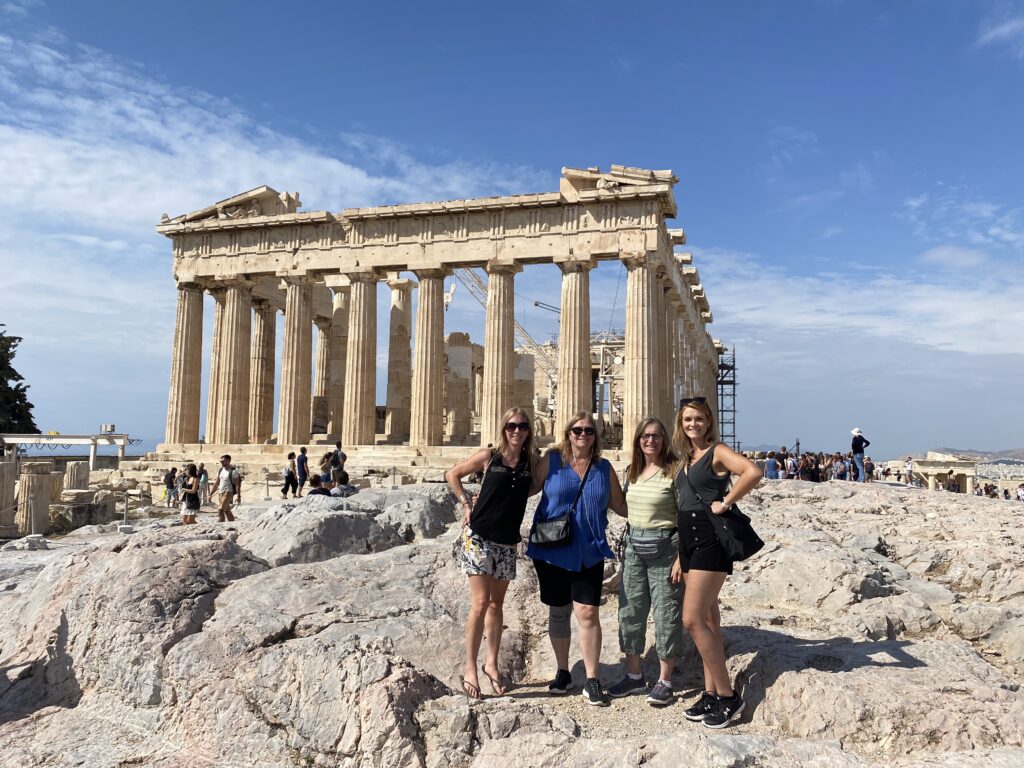
Planning a multi-generational trip feels like solving an impossible puzzle – you need somewhere accessible enough for older family members, exciting enough for younger ones, and rich enough in experiences to create meaningful memories for everyone.
Greece emerges as the rare destination that checks every box, offering ancient wonders, stunning coastlines, and surprisingly thoughtful infrastructure that makes family travel across age groups not just possible but genuinely enjoyable.
Having recently navigated Greece with my own multi-generational family, including my 70-year-old aunt and my mother, who was recovering from knee surgery, I’ve discovered the secrets to making Greek island hopping work beautifully for families with diverse needs and interests.
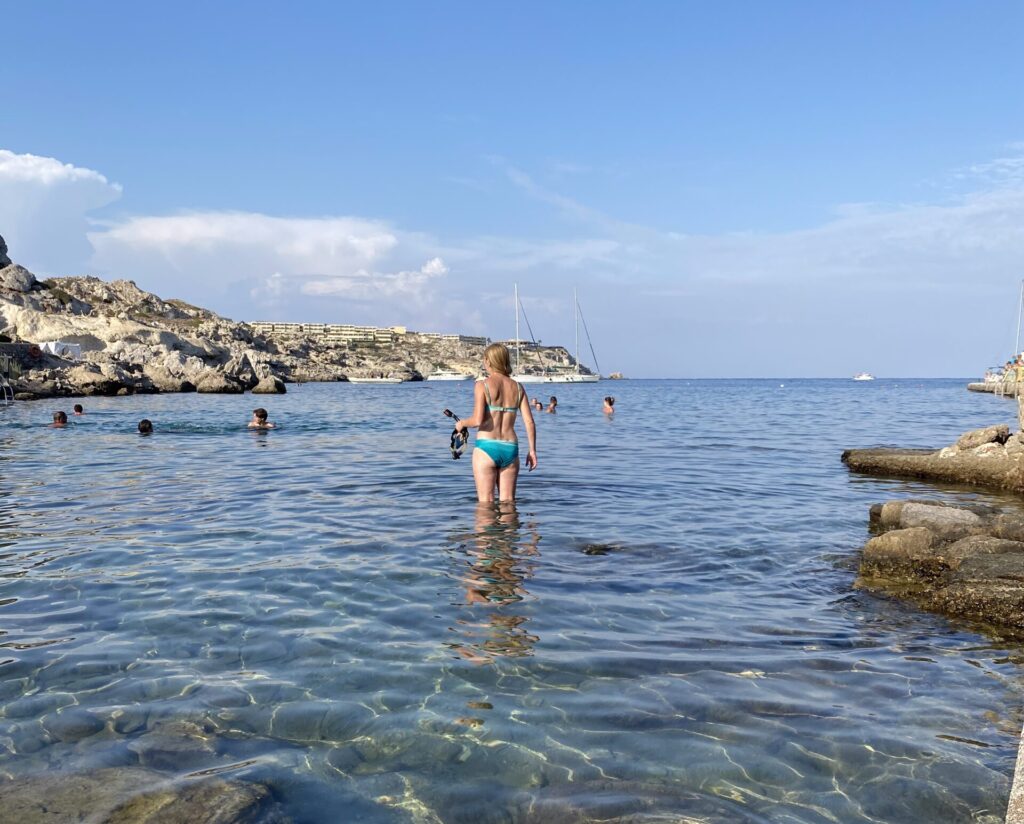
From the game-changing elevator at the Acropolis to sunset dinners in Oia that unite generations in awe, Greece has surprised me with its commitment to accessibility without sacrificing the authentic experiences that make travel transformative.
Whether you’re working with a shoestring budget or ready to splurge on luxury, this guide will show you exactly how to create a Greek adventure where every family member, from curious grandparents to adventure-seeking teens, comes home with stories they’ll treasure forever.
What Makes Greece Family-Friendly
Accessibility Infrastructure
Greece has made significant strides in accessibility, including the installation of an elevator at the Acropolis.
If you or someone in your group has difficulty walking or with mobility, this elevator allows the option to avoid walking all the way to the Acropolis. It’s conveniently located just after the ticket booth.
While this attention to accessibility doesn’t extend to all attractions around Greece, namely places like Red Beach in Santorini, the most popular attractions, especially in Athens, often have options for those with mobility issues.
Since it’s extremely popular, I’ll also note that Oia in Santorini is mostly closed to cars and has only small pedestrian roads, so this may be difficult for those with mobility issues.
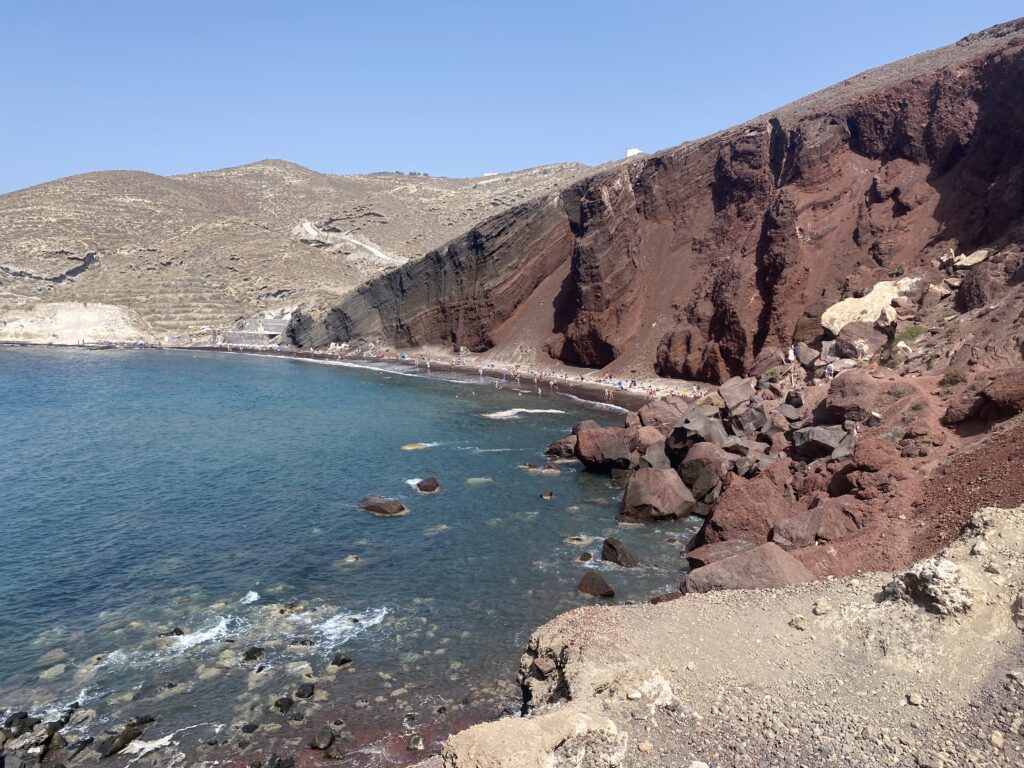
English Prevalence
English is highly prevalent in tourist areas, making communication easier for all family members regardless of their foreign language skills.
While I always recommend trying to learn some of the local language before visiting a destination, it’s reassuring to know you won’t be totally adrift if you’re not fluent in Greek.
Varied Interests
Greece satisfies diverse family preferences. History enthusiasts can explore UNESCO World Heritage sites, such as the Acropolis and the Ancient Agora, while beach lovers can enjoy the unique volcanic black sand beaches at Perissa and the distinctive Red Beach.
Shopping enthusiasts have markets like Monastiraki Flea Market and antique markets at Avissinias Square.
But the whole family can come together for a spectacular sunset dinner in Oia, ensuring something meaningful for older and younger family members.
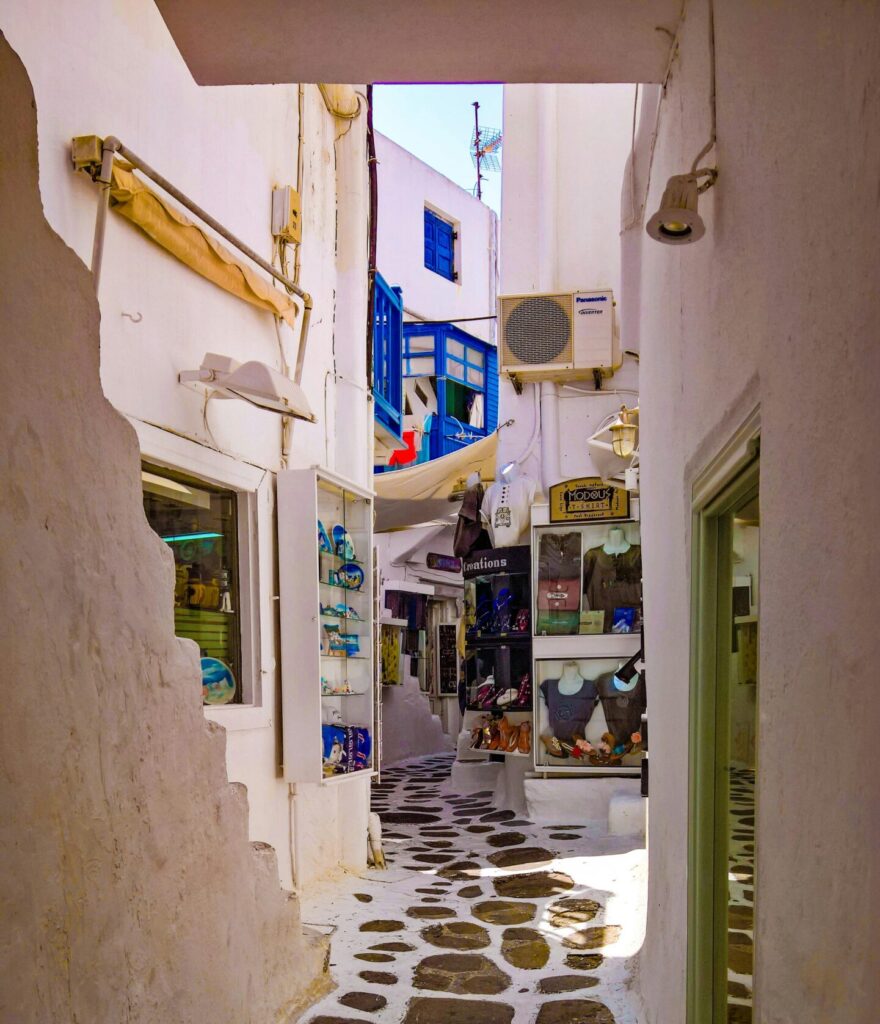
Transportation: Budget to Luxury Options
Getting to Greece
If you’re traveling to Greece from abroad, Athens is likely your most convenient and cost-effective option to enter the country.
But once you land there, how do you get around?
Budget Option – Public Transportation: Taking the bus to the city center from the airport is not only super simple, but budget-friendly. Route X95: Syntagma – Athens Airport is ideal if you’re staying in central Athens.
Tickets are available from the bus drivers, at the ticket kiosk in the bus departure area, and at all metro stations throughout Athens. Only one-way tickets are offered, priced at €6, with half-price tickets available for those aged 65 and older upon presentation of a valid ID.
Mid-range Option – Taxi: If buses aren’t your style or you’re traveling with a large group, consider opting for a taxi to and from the airport.
They can be found queuing in major hubs such as the Plaka district or at the airport.
The taxi cost around €40, which was €10 per person for us. After a long journey, my family appreciated that we didn’t have to drag our suitcases around to the nearest bus stop.
Luxury Option – Private Transfers: For added convenience, book a private transfer in advance so that someone will be waiting for you at the airport or your hotel.

Island Hopping Around the Greek Islands
Once you’ve spent a day or so exploring Athens, it’s time to check out some of Greece’s incredible islands.
Relaxed Pace – Ferry Travel: Taking a ferry ride is a popular choice when island hopping around Greece. Especially if you’re taking a car with you, as you can take it on the ferry for an additional fee.
However, ferries take longer, are subject to delays due to weather, and aren’t best for those who get seasick.
Time-Efficient – Flying: With the destinations on my Greek island hopping itinerary, it turned out to be faster and cheaper to fly most of the time.
However, it should be noted that most islands do not have direct flights to one another, so you’ll likely need to fly back through Athens if you’re trying to get from, say Rhodes to Santorini.
Local Transportation
Budget Option – Public Buses: The most affordable way to get around Greece is by using the local bus system. Most of the time, you can buy tickets directly on the bus using cash.
Mid-Range – Car Rentals: If you plan to visit a larger island, such as Rhodes, I highly recommend renting a car to explore rather than relying on bus transport, as many of its sites are spread out.
In Greece, you’ll need to have an international driver’s permit, which you can get at AAA for $20.
Luxury Option – Private Drivers: For families with mobility concerns or those wanting maximum comfort, private drivers can be arranged through hotels or tour companies.
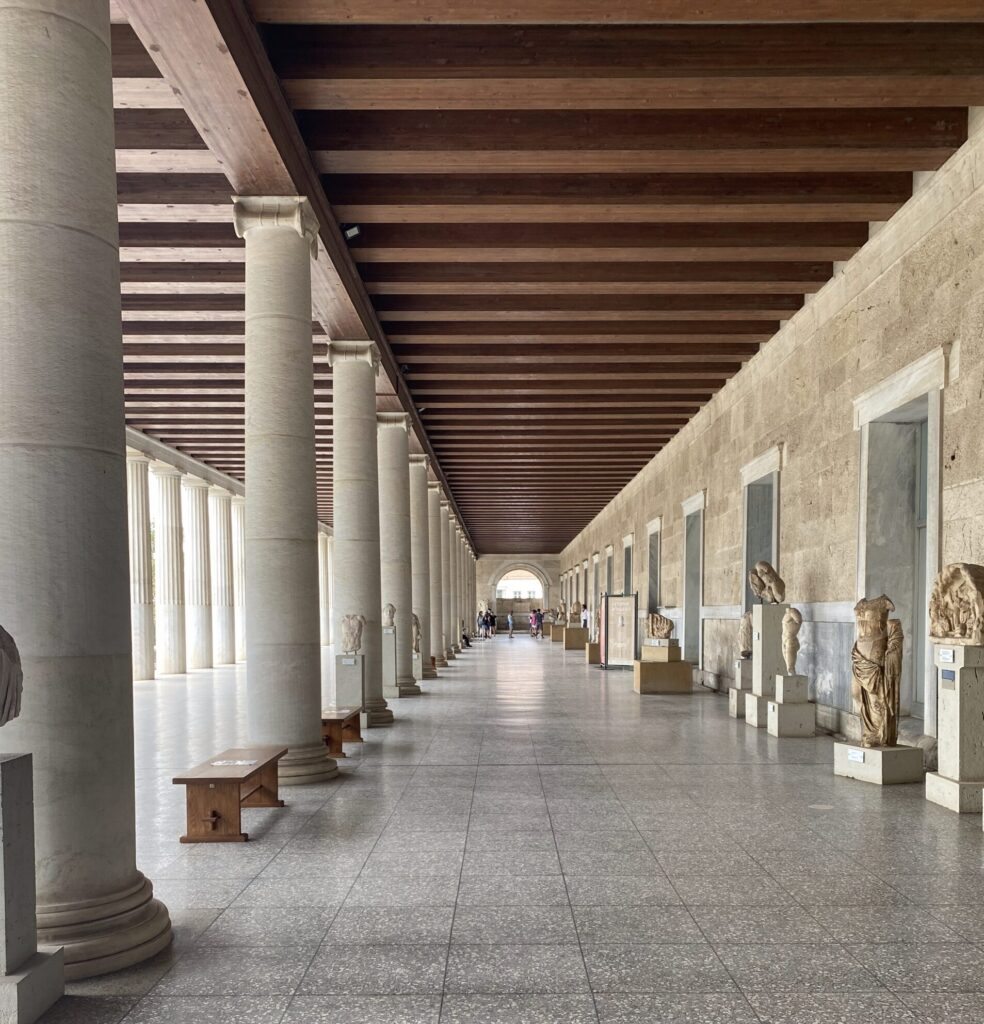
Accommodation Options for Every Budget
Budget-Friendly Hotels
- Athens:
- Athenian Spirit
- Loom Athens
- Spotapart residencies
- Santorini:
- Seven Suites
- Fileria Suites
- Black Diamond Suites
- Rhodes:
- STAY Hostel Rhodes
- Manousos City Hotel
- Island Boutique Hotel
Mid-Range Options
- Athens:
- Coco-Mat Athens BC
- The Pinnacle Athens
- 11 Enteka Acropolis Suites
- Santorini:
- Santorini Princess Spa Hotel
- Dreams Luxury Suites
- Sole d’oro Luxury Suites, Oia Santorini
- Rhodes:
- Saint Michel
- Old Town Senses Boutique Hotel
- 10GR Boutique Hotel & Wine Bar
Luxury Accommodations
- Athens:
- The Social Athens Hotel
- Herodion Hotel
- The Modernist Athens
- Santorini:
- SantAnna Luxury Suites
- Athina Luxury Suites
- Andronis Luxury Suites
- Rhodes:
- Hotel Ellique
- Jensen Luxury Suites
- April Medieval Hotel
Neighborhood Recommendations:
- Athens: Plaka District or Psyrri to be close to the main attractions
- Santorini: Fira for budget-conscious families, Oia for luxury experiences
- Rhodes: Near the Old Town for easy access to attractions

Activities That Appeal to All Ages
Historical Sites (Perfect for History Enthusiasts)
The Acropolis, Athens: When you visit the Acropolis, you can see several sites within the complex, including the Propylaea (the main entrance), the Theatre of Dionysos, the Odeion of Herodes Atticus, the Erechtheion, the Temple of Athena Nike, and the Parthenon.
The Changing of the Guard at Syntagma Square, Athens: This prime free entertainment will mesmerize you for at least 20 minutes! The Evzones (the guards) perform this elaborate, slow-motion dance in their traditional uniforms.
Palace of the Grand Masters, Rhodes: The Palace of the Grand Master of the Knights of Rhodes is a medieval fortress located in Rhodes’s Old Town. Visitors can explore its collection of mosaic floors sourced from the island’s monuments, as well as medieval furniture.
Akrotiri Archaeological Site, Santorini: Akrotiri is a Minoan Bronze Age settlement. Similar to Pompeii, the settlement was encapsulated by volcanic ash, allowing ancient frescoes, artifacts, and artworks to be preserved. While Pompeii is more well-known, Akrotiri is significantly older.
The Museum of Prehistoric Thera, Santorini: Uses Akrotiri as a reference point to showcase the life and culture of Thira during the Prehistoric period.

Beach Activities (For Relaxation Lovers)
Perissa Black Beach, Santorini: Features distinctive black sand, a result of the island’s volcanic activity. The eruptions that created it are so unique that this type of black sandy beach is not found elsewhere in the Aegean.
Red Beach, Santorini: Like Perissa, this beach is unusual due to volcanic activity, however it is pretty tricky to reach this beach so if you have any family members with mobility issues I highly recommend that instead of hiking to this beach that you go on a day cruise that’ll take you to the sea side of this beach so you can see it without having the ascend the rocky terrain.
Anthony Quinn Bay, Rhodes: Crystal-clear waters, though there are sharp rocks, which make wading into the water a bit treacherous unless you have water shoes. However, you can rent snorkel gear here if you’re interested in checking out the various fish that inhabit the island.
Kallithea Thermal Springs, Rhodes: This beach is more accessible, as it isn’t overly rocky, making it an excellent option for those seeking a more relaxed or family-oriented experience.
Shopping & Markets (For Those Looking for Souvenirs)
Monastiraki Flea Market, Athens: At the entrance to Ifestou Street, you’ll spot an “Athens Flea Market” sign. This is where you can find handmade sandals, clothes, souvenirs, and second-hand items. Be sure to negotiate to get the best prices!
Avissinias Square Antique Market, Athens: Situated between Ifestou Street and Ermou Street, Avissinias Square has hosted an antique flea market for over 100 years.
Plateia Theotokopoulou (Theotokopoulou Square), Santorini: Fira’s main square is home to many small streets filled with shops. Here, you can find everything from jewelry to souvenirs to clothing. There are also a fair number of cafes, restaurants, and bars.
Old Town, Rhodes: A medieval city constructed within a castle with six gateways. Inside the reinforced city walls, you’ll find churches, mosques, palaces, squares, gardens, souvenir shops, cafes, stores, and jewelers.

Practical Family Travel Tips
Packing Essentials for the Greek Islands:
- Sunscreen: We were feeling the heat on the beaches of Santorini.
- Hat: I’ve been burned before on my part, and it is not fun!
- Water Shoes: Especially if you plan on visiting a rocky beach such as Anthony Quinn Bay or Ladiko Bay.
- Non-white Swimsuit: May sound a bit weird, but the Red Beach in Santorini can stain your clothing.
Medication Considerations
- Dramamine: If you take the ferry, you may want to bring Dramamine in case you get seasick.
- Footwear Recommendations: Bring shoes with flat bottoms, as there are numerous cobblestones in Athens and on the Greek islands. Wearing heeled boots or high heels will likely only cause trouble and may even result in a broken ankle.
Technology Tools
- Download Maps.me for offline navigation
- Use Rick Steves’ free app to access audio guides for historical sites
- Install translation apps such as Google Translate and download the Greek language before traveling
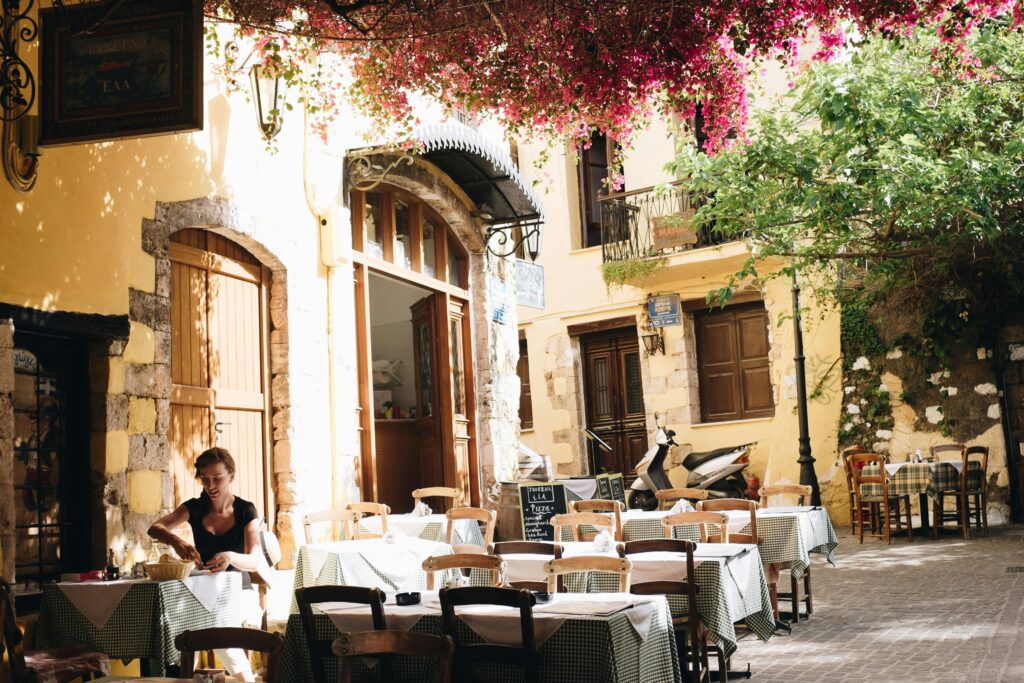
Seasonal Considerations for Families
The best time to visit Greece is during the shoulder season, from April to June or September to November, when the weather is mild and the crowds are smaller.
During these months, you can enjoy a more relaxed atmosphere and lower prices.
We visited in September and found the place not overly crowded, with warm enough temperatures to enjoy swimming, but not too hot.
Avoid peak summer travel, as the summer months can become sweltering and busy, with the peak season bringing a surge of tourists and higher prices.
Food & Dining for Diverse Tastes
If you need to accommodate various dietary restrictions while in Greece, be aware that it’s relatively easy to do so during your visit.
My cousin is a vegetarian and follows a gluten-free diet. My aunt is also a vegetarian. My mother doesn’t like fish. As for me, I’m pretty flexible. But even with all these stipulations, we were still able to accommodate everyone fairly easily.
If you are vegan or vegetarian, I recommend Veganissimo. Located in Fira, Santorini, it was one of the places my vegetarian relatives really liked. Its mission is to respect all taste preferences, so Veganissimo allows vegans and non-vegans to enjoy dining together in the same restaurant.
While in Greece, especially in Santorini, I highly recommend a sunset dinner. Fanari prides itself on being a privately owned building at the Caldera that offers “creative” accents to traditional tastes. It also incorporates local products and showcases Santorini’s cuisine.
Alternatively, there is also the Pelekanos Restaurant located in Oia. Oia is known for its sunsets, so getting a view from there at dinner was amazing! Please note that this restaurant may not be the best option for those with mobility issues, as it requires climbing a steep set of stairs to reach the terrace. At the top, however, you oversee the caldera and get a 360-degree panoramic view of the entire island.

Conclusion: Why Greece Works for Multi-Generational Travel
Greece’s exceptional blend of history, natural beauty, and improving accessibility infrastructure makes it an ideal destination for multi-generational family travel.
From the recently installed elevator at the Acropolis to family-friendly beaches, Greece is committed to welcoming visitors of all ages and abilities.
The country offers something meaningful for every family member: history enthusiasts can explore UNESCO World Heritage sites, beach lovers can enjoy unique volcanic sands, shopping enthusiasts have access to vibrant markets, and everyone can come together for spectacular sunset dinners overlooking the Aegean Sea.
Whether you choose budget-friendly options, such as public transportation and family hotels with included breakfast, or luxury experiences with private transfers and cliff-side dining, Greece provides the perfect backdrop for creating lasting family memories across generations.


























